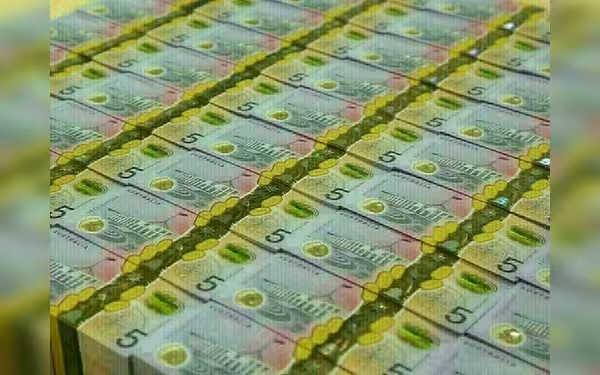Saturday, October 5, 2024 10:29 PM
Australian Dollar Gains Amid Positive Economic Data
- Australian dollar rises due to strong retail sales data.
- Market predicts potential interest rate cuts in December.
- New Zealand dollar remains stable with upcoming RBNZ meeting.
 Image Credits: brecorder
Image Credits: brecorderThe Australian dollar rises on positive retail sales data, with potential interest rate cuts expected in December.
The Australian dollar has recently gained significant traction, buoyed by positive domestic economic data and a favorable outlook regarding China's stimulus measures. This surge in demand for the Australian and New Zealand dollars has seen them hover near multi-month highs, reflecting a robust sentiment in the market.
Recent data from Australia revealed that retail sales rebounded by 0.7% in August, surpassing forecasts of 0.4%. This increase can be attributed to the warmest August since 1910, which encouraged early spending as the southern hemisphere transitions into spring. Sean Langcake, the head of macroeconomic forecasting for Oxford Economics Australia, noted, "There are some early signs that income tax cuts are helping boost consumer spending." He further emphasized that while this is a positive development for the growth outlook, it may not significantly alleviate the current inflation pressures.
The signs of increased consumer spending could influence the Reserve Bank of Australia’s (RBA) decision-making regarding interest rates. Currently, markets indicate only an 18% chance of a rate cut from the existing 4.35% cash rate at the RBA’s upcoming November meeting. However, there is a 71% probability of a reduction in December. Among major local banks, Commonwealth Bank of Australia (CBA) is predicting a cut in December, while Westpac and ANZ are leaning towards February. National Australia Bank (NAB), which had previously been more aggressive in its predictions, has also adjusted its forecast to February.
The positive outlook for steady interest rates has contributed to a 0.2% increase in the Australian dollar, bringing it to $0.6928. It even reached a new 19-month high of $0.6942 overnight. Resistance levels are noted at $0.6949 and $0.6973, with support around $0.6900. Meanwhile, the New Zealand dollar, or kiwi, remained stable at $0.6338 after briefly surpassing last December’s peak of $0.6369, reaching $0.6379. The next target for the kiwi is a high from July 2023, which stands at $0.6392.
The Reserve Bank of New Zealand (RBNZ) is set to meet next week, with expectations leaning towards a cut in its 5.25% cash rate by at least 25 basis points. The market is currently pricing in a 73% chance of a half-point reduction. A recent business survey indicated that while sentiment is improving from previously low levels, overall activity remains subdued, and fewer firms anticipate raising prices in the near future. Andrew Boak, an economist at Goldman Sachs, remarked, "The signal on near-term labour market outcomes was softer, with surveyed employment levels falling to a new cycle low." He added that the base case remains for the RBNZ to lower the Official Cash Rate (OCR) by 25 basis points next week, but the decision between a 25 basis point and a 50 basis point cut is a close call, given the risks to the RBNZ’s forecasts for consumer price index (CPI) and employment.
The current economic landscape in Australia and New Zealand presents a complex picture. While positive retail sales data and consumer spending trends are encouraging, the looming inflation pressures and the potential for interest rate cuts create an environment of uncertainty. As both countries navigate these economic challenges, the performance of their respective currencies will continue to be closely monitored by investors and analysts alike. Understanding these dynamics is crucial for anyone looking to engage with the financial markets, as they can significantly impact investment strategies and economic forecasts.













